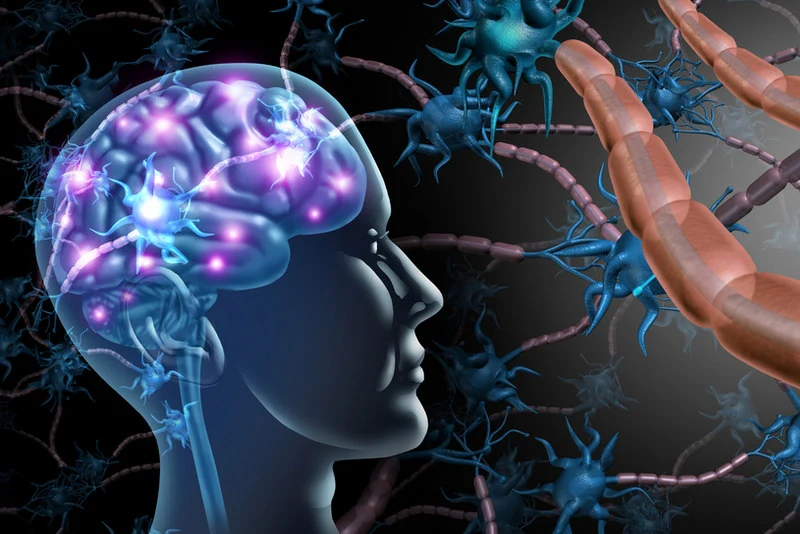This article will explore the realm of Transcranial Magnetic Stimulation (TMS) as an innovative and non-invasive treatment approach for Attention Deficit Hyperactivity Disorder (ADHD).
Up to 1/3 of people with ADHD don’t respond to standard prescription medications or suffer from adverse side effects. For those individuals and others with ADHD, TMS therapy offers a viable treatment with limited side effects and statistically significant efficacy.
ADHD
Attention deficit hyperactivity disorder is a very common disorder that has pharmacological treatments. However, 1/3 of people with ADHD don’t get any benefit from prescription medications and need alternatives. Transcranial magnetic stimulation is one such alternative with a lot of promise.
TMS
TMS is a form of non-invasive treatment with limited side effects. It doesn’t have a recovery time or potential side effects from anesthesia and instead relies on a physical device placed on the head controlled by a professional who directs magnetic impulses into the brain at targeted regions. By picking specific areas with abnormalities or dysfunction, this therapy can improve blood flow and function along specific neural pathways.
TMS Mechanism and Its Relevance to ADHD
In some individuals, specific regions of the brain are implicated in ADHD symptoms, like the right prefrontal cortex. Individuals with ADHD often have abnormal right prefrontal cortex activity.
There are multiple functional and structural neural networks in the front of the brain that individuals with ADHD have abnormalities and don’t function the way they should. This can have a detrimental impact on executive function, attention, working memory, inhibition, and planning. However, non-invasive TMS has the option of targeting specific regions of the brain with those abnormalities and fixing them.

Multiple sessions of transcranial magnetic stimulation can modulate the following in a non-invasive fashion for that and other regions of the brain:
- Activity
- Excitability
- Plasticity
By sending more blood flow and helping to encourage excitability and activity, TMS can alter the function of certain areas of the brain. Given the fact that the brain is plastic, like a muscle, and it’s always learning, changing, and growing, this type of stimulation can encourage changes that might not have otherwise been possible, and these changes could help reduce ADHD symptoms.
Clinical Studies and Research Findings on TMS for ADHD
Several studies have found that just three weeks of daily TMS for ADHD resulted in statistically significant changes in impulsivity and hyperactivity. Participants saw vastly reduced ADHD symptoms compared to other forms of treatment.
Results from these and similar studies confirm that TMS therapy for ADHD in as little as three weeks can offer an alternative treatment to alleviate ADHD symptoms for those who cannot tolerate the side effects of medication, don’t benefit from medication, or want a holistic form of care that doesn’t involve prescriptions.
TMS therapy ADHD and other treatments for ADHD
Targeted treatment
Medication and therapy cannot necessarily change targeted areas of the brain, but TMS is unique in that the first session is used to map the brain. Every brain is laid out slightly differently, with different sizes in respective areas.
By mapping the brain and reviewing elevated marker activity and other biomarkers, TMS therapy sessions can change the areas that are stimulated in order to meet specific goals and achieve individualized effects.
Efficacy
If you look at TMS ADHD therapy, results happen very quickly, with several patients seeing changes in some of their symptoms within the first few sessions.
Medication can help change certain aspects of the brain by controlling it, but the efficacy only lasts as long as the medication is in your system, which means once you have digested and processed that medication, you need more of it to get the same results. However, with ADHD TMS, the changes to your brain start to have a lasting impact, and you are no longer reliant on something like daily TMS for the rest of your life to maintain the same results.
Longevity
When you compare TMS for ADHD to non-invasive treatments like regular behavioral therapy, skills training, or even medication, one great benefit is longevity. Skills training, for example, or time management techniques, are things that you can learn and apply through behavioral therapy, but therapy can take several months for you to gain those skills, whereas TMS can be done in a slightly shorter time frame, and the results happen much faster and last up to 1 year.

Treatment Duration and Frequency of TMS and ADHD
Studies have confirmed that undergoing three weeks of daily TMS is enough to provide significant results for people with ADHD. The impact of TMS therapy for ADHD can have lasting results anywhere between several months and one year. As such, therapy may need to be repeated regularly in order to manage symptoms long-term.
Safety and Side Effects of ADHD TMS
One of the most common concerns regarding any type of treatment has to do with safety and any potential side effects.
Safety of TMS for ADHD
Part of the reason that TMS therapy for ADHD is growing in popularity is because of its safety. As mentioned, it is a significantly better option in terms of safety compared to other types of treatment like invasive procedures or medication. For some people, this may be the only option they have if they have developed a tolerance to medication or if medication doesn’t work to alleviate symptoms.
Potential TMS ADHD Side Effects
With TMS and ADHD treatment, perhaps the biggest benefit is not just that it’s safe and effective but that it has limited to no side effects.
Most people do not experience side effects, and those who do experience mild side effects include:
- Temporary discomfort at the site where the electrodes were placed, something that goes away after the first few sessions
- Mild headaches after treatment, again something that goes away after the first few sessions
TMS does not have the potential for contraindications with other medicines, which means you can use TMS ADHD therapy in conjunction with other prescriptions for ADHD symptoms until such time as the TMS has produced results significant enough that you may no longer be reliant on medication or until such time as you feel comfortable reducing medication reliance.
Summing Up
ADHD TMS therapy has great potential as a non-invasive treatment approach to help manage symptoms for significant lengths of time. If you are struggling with ADHD, consider getting a referral from your doctor for TMS therapy for ADHD.
